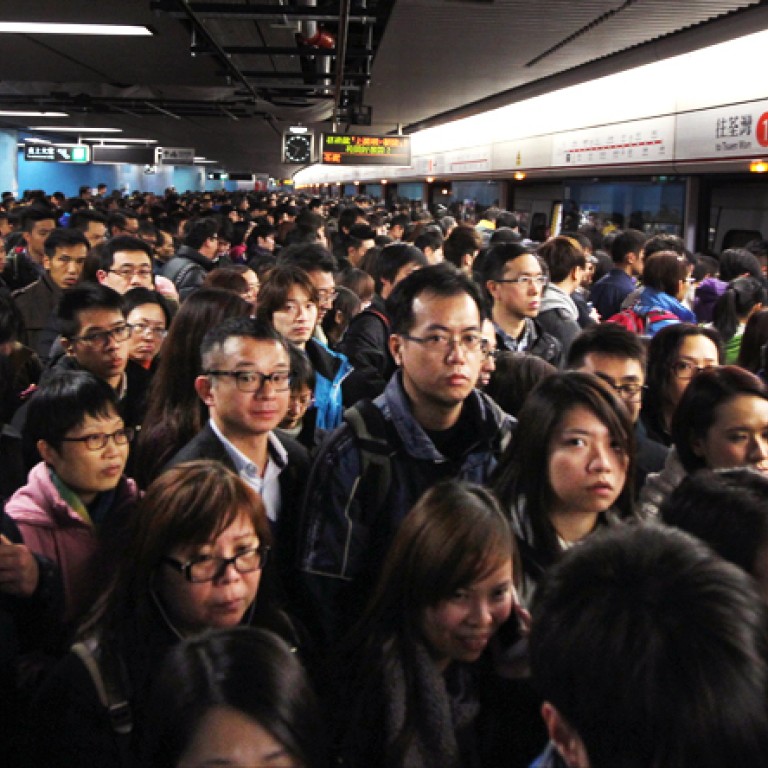
Influx of tourists will put MTR trains under strain, says minister
Anthony Cheung says influx of tourists carrying baggage will be tough for the MTR network
An influx of tourists will "pose great challenges" for the MTR network and mean new tactics will be needed to deal with overcrowding, the transport minister said yesterday.
Professor Anthony Cheung Bing-leung was questioned about the strain on public transport at a Legislative Council meeting after the government changed the way it measured capacity on the MTR.
Under the new standard announced last month, the Tseung Kwan O and East Rail lines are at capacity during the morning rush hour, with the Island, Kwun Tong, Tsuen Wan and West Rail Lines more than 90 per cent full.
But a government report assessing the city's capacity to receive more tourists, published in January, found that the MTR had plenty of spare room, with trains running at just 40 per cent of capacity in off-peak hours.
"Tourists with baggage pose great challenges for the railway and public transportation system," Cheung told lawmakers.
"If the number of passengers, or tourists, continue to rise, we will really have to think about how to deal with it."
He said the MTR Corporation might have to improve platform management. The company announced on Tuesday that it would hire 300 extra staff this year to assist on platforms.
The government decided last month to calculate capacity of the MTR system based on a maximum of four standing passengers per square metre, rather than six per square metre, the standard established in the 1980s and '90s.
But one lawmaker, Michael Tien Puk-sun of the New People's Party, suggested an even tighter standard of three passengers per square metre. He cited the fact that more passengers were carrying bags onto trains.
"With the opening of the cross-border high-speed railway and the Hong Kong-Zhuhai- Macau bridge, the growth rate in the number of tourists will certainly exceed the current rate of 20 per cent annually," Tien said.
Cheung said the government was also looking at ways in which the bus and rail systems could be integrated better.
A consultation had taken place on the development of more new railway lines, he added. The government was in the final stages of compiling its report, which would be released soon. After doing so, Cheung said, the government would begin conducting a first comprehensive study of the transport network since 1997.
The January report suggested visitor numbers could increase from 54.3 million last year to 70 million in 2017 and 100 million in 2023, fuelled largely by a growing number of mainland tourists and prompting concerns about the city's capacity to cope.
The MTR announced increased train frequencies on some lines on Tuesday, but says its signalling system is close to its maximum load, reducing its scope to add more services until a revamp begins in 2018.
Watch: Hong Kong's MTR during peak hours
